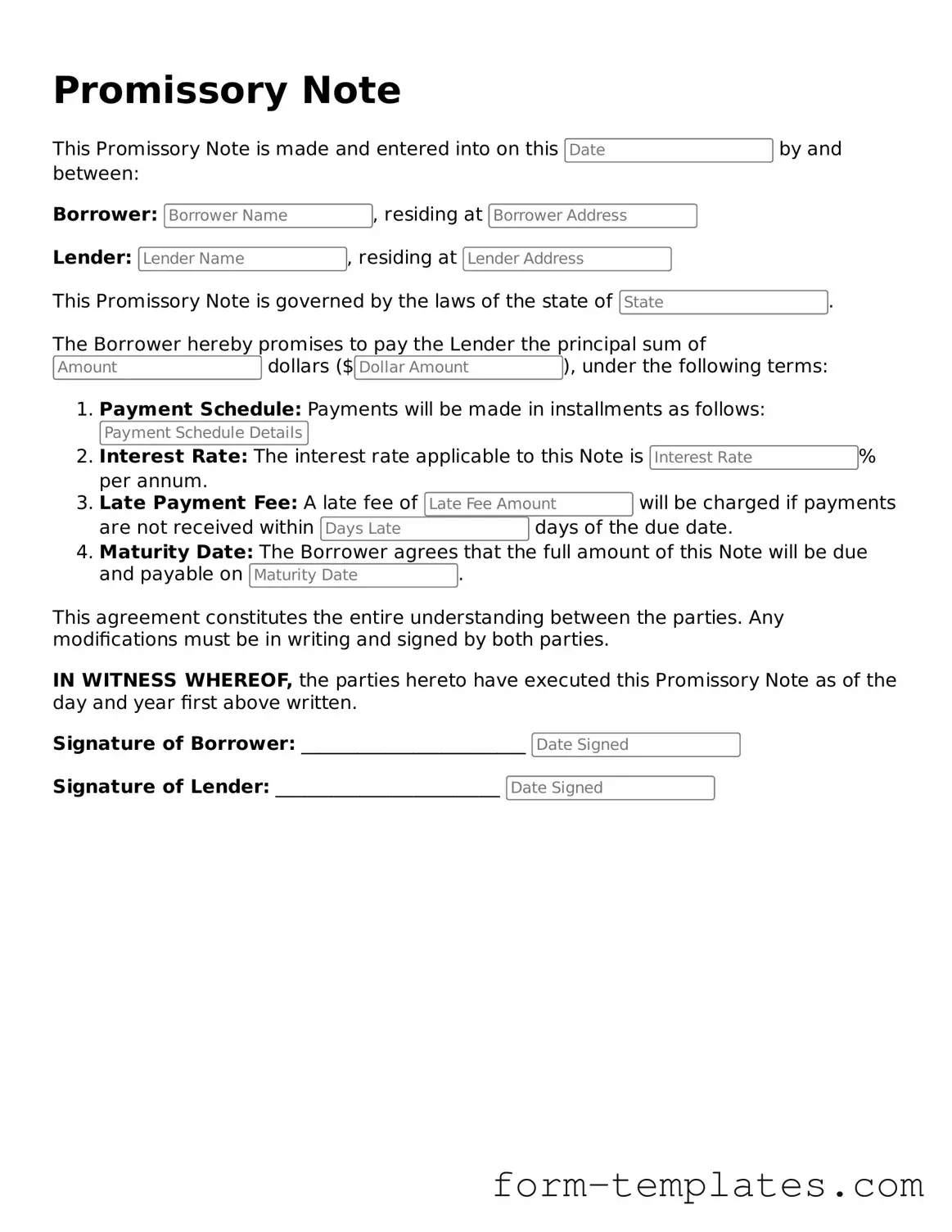What is a Promissory Note?
A Promissory Note is a written promise to pay a specified amount of money to a designated person or entity at a specified time. It outlines the terms of the loan, including the interest rate, repayment schedule, and any penalties for late payments.
Who uses a Promissory Note?
Individuals and businesses commonly use Promissory Notes. They are often used in personal loans, business financing, and real estate transactions. Anyone who lends money can create a Promissory Note to ensure repayment.
A typical Promissory Note includes the following information:
-
The names and addresses of the borrower and lender
-
The principal amount being borrowed
-
The interest rate and how it is calculated
-
The repayment schedule, including due dates
-
Any penalties for late payment
-
Signatures of both parties
Is a Promissory Note legally binding?
Yes, a Promissory Note is a legally binding document. Once signed, it obligates the borrower to repay the loan according to the terms outlined in the note. If the borrower fails to repay, the lender can take legal action to recover the funds.
Can a Promissory Note be modified?
Yes, a Promissory Note can be modified if both parties agree to the changes. It is important to document any modifications in writing and have both parties sign the amended note to ensure clarity and enforceability.
What happens if the borrower defaults?
If the borrower defaults on the Promissory Note, the lender has several options. They may attempt to collect the debt through negotiation or may pursue legal action to recover the owed amount. The specific actions depend on the terms of the note and applicable laws.
Do I need a lawyer to create a Promissory Note?
While it is not required to have a lawyer draft a Promissory Note, consulting with one can provide peace of mind. A lawyer can ensure that the document complies with state laws and adequately protects both parties' interests.
Can I use a template for a Promissory Note?
Yes, many templates are available online for Promissory Notes. However, it is crucial to customize the template to fit your specific situation and ensure that all necessary details are included. Review the document carefully to avoid any misunderstandings.
What is the difference between a Promissory Note and a loan agreement?
A Promissory Note is a simpler document that focuses on the promise to pay. A loan agreement, on the other hand, is more detailed and may include additional terms such as collateral, representations, and warranties. Both serve different purposes but can be used together in a lending situation.
